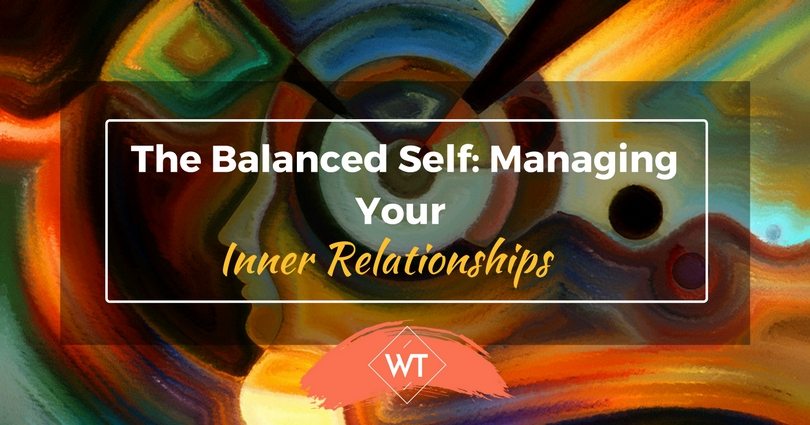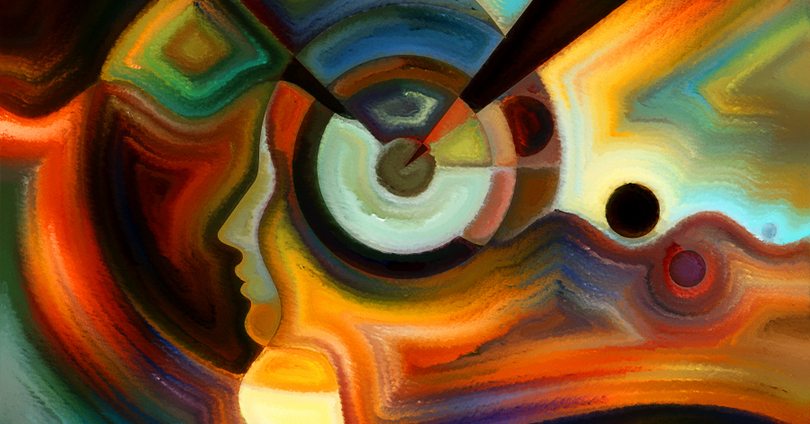The Balanced Self: Managing Your Inner Relationships

Nothing can dim the light which shines from within. ~ Maya Angelou (Tweet this)
If the mind was an organization it would have a department or section called ‘Inner Relationship Management.’ It sounds quite corporate I know, but the analogy is not out of place.
I remember reading a book a few years ago which I believe was called ‘Make your Mind Work for You’ by Joan Minninger. The central idea of the book was that there are multi levels of mind and instead of thinking about the mind as a single body (pun unintended), the analogy to a board of directors around a board room table was used.
Each of the directors represented different aspects of our mind, all of them having their responsibilities and points of view, negotiating for more say and dealing with internal politics.
Although I believe that this analogy is not completely sufficient to explain some basic truths about how the mind works, it does shed some important light in a way that is easier to grasp. In many ways, it is true that when we mention our relationship with ourselves, in reality it isn’t just one relationship we are talking about but different relations with different aspects of ourselves.
You are your master. Only you have the master keys to open the inner locks. ~ Amit Ray (Tweet this)
Similarly when we say that we need to work on ourselves, what we mean is that we need to work upon how we relate to a certain aspect of our mind.
So it seems that one thing we are constantly dealing with is trying to manage these different inner relationship aspects. Sometimes we feel that we are having a harmonious inner relationship with a part of ourselves but perhaps another inner relationship with a different aspect is going sour and hence we feel that we are not optimally balanced.
Our Inner Relationship List
Through my own personal observations, I see that we commonly tend to have these aspects of self that we keep and manage our inner relationship with:
The Inner Child
In popular Psychology and personal development, there is often reference to the inner child. The inner child represents an internal resource of fun, play and creativity. The idea is that even as we mature as adults, we still harbor (and sometimes repress) a part of us that is curious and just wants to go out and play with life instead of following rules and being disciplined.
If we don’t heed or appease the inner child in us, it will tend to distract us or constantly call our attention resulting in a general feeling of frustration and dissatisfaction without knowing why. This may also result in feeling fidgety or unable to focus on work when we need to.
On the contrary giving space to our inner child to voice its requests may prove to be a powerful ally in our life. It can give us the energy and excitement to look at things from a fresh and playful perspective and help us in maintaining motivation without being dulled by constant routines.
The Internal Critic
This is perhaps the most notorious of the inner relationship aspects we have to relate to. The inner critic is that part of us that is critical about whatever is happening to us—whether it is ideas, experiences, choices or our life in general. If given too much rope, the inner critic can turn to be very unhelpful as it ends up sabotaging us.
For example, if we over-criticize ourselves or if we are too hard on ourselves, we can get stuck in negative patterns of thought which results in general pessimism, distrust in life and lack of confidence about our capacities. Having said this, although the internal critic has been vilified as being a saboteur, this is not always so.
In reality, if our internal critic doesn’t step beyond a certain line and we maintain an inner relationship with it that is genuine, it can also help us in keeping the checks and balances in our lives. So whether it is constructive or destructive, depends on how we develop that particular inner relationship and the terms and agreements we make.
The Information Seeker
In general this is a part of ourselves that is not that popular or celebrated. It is a discreet part of our make-up that often goes unnoticed. The information seeker in us will try to make sure that we have enough information or evidence to back up our choices or plans.
It works very well with ‘the analyst’ in us. The problem that can ensue when our inner relationship with the information seeker is not balanced, is that we end up hung up on many things because we feel we don’t have enough information. When we let this part of us run too loose, the extreme is then that there’s never enough information and we end up not taking part in many things thus losing opportunities.
When the proper inner relationship is in place, however, we seek information when needed and use it to our advantage but at the same time know when it is okay not to have enough information and go with our guts.
The Romantic Idealist
This is the pirate, poet and lover in us. The romantic idealist is what gives us that flair and the inspiration to live life more fully. It romanticizes our memories and gives us new hopes and dreams. However when this part of us takes too much control over our feelings and emotions we tend to shift from being ‘romantic’ to being ‘dramatic’ about our life situations.
For instance, we end up being over-nostalgic and attached to the past or we get really frustrated with ordinary life situations because they do not fit into the idealistic picture we have put into our head. The danger of not keeping the romantic idealist in us in check is that it will make us feel at odds with life and instead of accepting and dealing with ordinary life circumstances we end up feeling always distraught at living a less-than-ideal life.
Happiness is part of who we are. Joy is the feeling. ~ Tony DeLiso (Tweet this)
The Warrior
We all have a warrior in us. Sometimes it’s a silent warrior and sometimes it’s always on the front line shouting for battle. The warrior in us is that part which feels the need to fight for a cause or to fight an injustice. Although the warrior inside of us will always fight for a just cause, it can go out of control and end up consuming and draining our energies to fight battles we are not even aware of.
The key to maintaining a healthy and balanced inner relationship with our internal warrior is to be conscious of our internal struggles. We have to be firm and combative when we need to, but we also have to be conscious of not fighting a useless battle or one which can be solved in more peaceful terms.
An example of this is fighting tooth and nail for more recognition or perceived merit. This is most often a lost battle since it tends to create the opposite effect. Respect and recognition are gained in different ways other than fighting for it.
The Analyst
Neuro-scientists tell us that the brain is divided into two hemispheres: the left and right. The left hemisphere is more dominant when it comes to analytical, logical and verbal processing. Sometimes we go overboard with too much analytical thinking and end up tripping-up ourselves more than anything else. We all fall victim to this part of us.
We need to keep a strict formal inner relationship with our ‘analyst’ and keep it clear that it is a ‘subordinate’—it doesn’t direct the business. When it does, we end up closing ourselves in by over-cautiousness and thus blocking helpful paths to action.









Leave a Reply